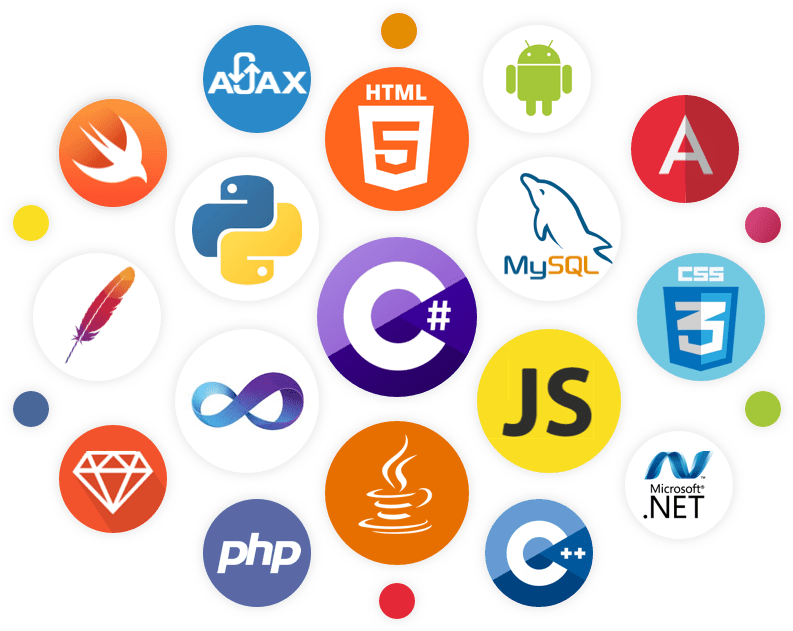The Unicorn of Code: Is There a Perfect Programming Language?
From the dusty halls of academia to the bustling tech hubs, a heated debate rages on: can we ever truly find the perfect programming language? Each language boasts its strengths – Python’s simplicity, Java’s robustness, C++’s raw power – but none escapes the clutches of trade-offs and limitations. Is this quest for a silver bullet language a fool’s errand, or are we on the cusp of a paradigm shift that will rewrite the rules of code?
In this article, we delve into the heart of this debate, exploring the very notion of “perfect” in the context of programming languages. We’ll examine the diverse needs of developers across different domains, the ever-evolving landscape of technology, and the fundamental constraints that shape language design. Join us as we unpack the arguments for and against a single, universal language, and uncover the exciting possibilities that lie beyond the traditional binary of “perfect” versus “imperfect.”
This is more than just a technical debate; it’s a conversation about the future of software development itself. Are you ready to join the conversation?
Introduction
Since the dawn of computing, programmers have dreamt of a single, perfect language – a universal Esperanto of code that transcends borders, domains, and limitations. This quest, like the mythical Tower of Babel, has been fueled by ambition and practicality, but its success remains as elusive as ever. So, let’s dive into the fiery debate: can we ever truly find the perfect programming language, or are we destined to forever wrestle with a multitude of tongues?
The Historical Tapestry
Our tale begins with the early giants. FORTRAN, born in the 1950s, tackled scientific calculations with ease but stumbled outside its niche. COBOL, designed for business applications, offered clarity but struggled with performance. Then came C, a revolutionary language that brought power and control, but also the burden of memory management, leaving many programmers with debugging scars.
Each language, a snapshot of its time, reflected the needs and limitations of its era. But as technology evolved, so did the demands placed on languages. Enter Java, boasting platform independence and object-oriented features, perfect for enterprise applications. While Java was organized and stable, its code felt slow and clunky compared to C’s raw power, like trying to run in molasses compared to a cheetah!
The Trade-Off Tango
The truth is, perfection in coding is like finding a unicorn: mythical. Languages, like tools, excel in specific areas. Python’s beginner-friendliness makes it a learning haven, but its speed can’t match C++’s raw power, crucial for high-performance tasks.
This trade-off extends beyond performance. JavaScript, dynamic and versatile, reigns supreme in web development, but its loose typing can lead to unpredictable behavior. Rust, a newcomer, promises memory safety and blazing speeds, but its steeper learning curve makes it less accessible.
The Domain Dilemma
Further complicating things, different fields have vastly different needs. Just as a carpenter wouldn’t use a scalpel, a data scientist wouldn’t choose C++. R, for example, dominates statistics with its specialized libraries, while Go, with its focus on concurrency and simplicity, thrives in microservices architectures.
The Innovation Engine
Despite the challenges, the quest for perfection isn’t stagnant. New languages like Kotlin offer modern features while remaining compatible with Java. Frameworks and libraries constantly expand the capabilities of existing languages, blurring the lines between them.
Beyond the Binary
So, the answer to our initial question? No, a single perfect language is likely a pipedream. In a world where technology and domains diverge, a one-size-fits-all solution seems unlikely. But that doesn’t mean the search is pointless. Instead of clinging to a singular ideal, we should embrace the diversity and evolution of programming languages.
This means learning multiple languages, expanding our coding toolbelt. It means welcoming innovation and exploring new languages that tackle specific problems. It means embracing the trade-offs, understanding that no language is perfect, but each has its strengths.
Choosing the Right Programming Language: Your Code Toolbox Guide
Imagine tackling a project without the right tools. Building a house with a screwdriver wouldn’t be very efficient, right? The same applies to programming languages. While there’s no single “perfect” language, understanding each one’s strengths helps you pick the best tool for the job.
For Beginners:
- Python: Like a friendly workshop assistant, Python’s simple syntax and clear instructions make it ideal for learning the ropes. Build simple games, analyze data, or automate tasks – all with Python’s vast libraries and supportive community.
- Example: Imagine creating a basic website to showcase your portfolio. Python’s Django framework lets you build it quickly and easily, focusing on content rather than complex coding.
For Speed and Performance:
- C++: Think of it as a high-powered drill. C++ delivers raw speed and control, making it the go-to choice for performance-critical tasks like game development and scientific simulations.
- Example: Building a 3D racing game requires lightning-fast calculations. C++’s efficiency ensures smooth gameplay and immersive graphics, even on less powerful devices.
For Enterprise Applications:
- Java: Imagine a sturdy construction team. Java’s robust structure and ability to run on different platforms make it ideal for large-scale enterprise applications that need stability and reliability.
- Example: Developing a banking application that handles millions of transactions daily requires a secure and reliable language. Java’s strong typing and error prevention minimize bugs, ensuring accurate financial data management.
For Web Development:
- JavaScript: Picture it as the electrician that brings your website to life. JavaScript adds interactivity and dynamic elements, making web pages engaging and responsive.
- Example: Building an e-commerce website requires adding features like product carousels and interactive checkout forms. JavaScript’s dynamic nature helps create a smooth and user-friendly shopping experience.
For Data Science:
- R: Think of it as a specialized lab equipment for analyzing data. R’s extensive libraries and statistical functions are perfect for data analysis, machine learning, and creating insightful visualizations.
- Example: Studying customer behavior to improve marketing campaigns. R’s powerful data manipulation tools help analyze vast datasets and identify key trends, leading to targeted marketing strategies.
We should always remember that this is just a starting point! Languages like Kotlin offer modern features for Android development, while Swift is the go-to for Apple apps. Explore, experiment, and find the languages that fit your project and your coding style. The more tools in your toolbox, the more amazing things you can build!
My Opinion
The pursuit of the perfect language might be a romantic notion, but the real magic lies in the vibrant ecosystem we’ve built. By understanding the strengths and weaknesses of different languages, we can choose the right tool for the job, build better software, and continue pushing the boundaries of what’s possible.
So, forget the dream of one perfect programming language, like a magical code Esperanto. Instead, imagine a toolbox overflowing with awesome tools, each suited for different jobs. That’s the reality of programming languages today!
Instead of getting stuck on finding “the one,” let’s celebrate the variety. We have Python, super friendly for beginners, and C++, the speed demon for serious calculations. Java keeps things organized for big projects, while JavaScript makes websites tick. And there are tons more, each with its own strengths and quirks.
Remember, the best language isn’t the one that rules them all, but the one that empowers you to build the world you dream of.
Think of it like choosing the right screwdriver. You wouldn’t use the same one for tiny screws and giant bolts, right? The same goes for code. Different problems need different languages.
The cool thing is, this toolbox keeps growing! New languages pop up, like Rust, the memory-safe whiz kid. And existing ones get better, thanks to clever libraries and frameworks.
So, instead of searching for a unicorn, let’s embrace the whole zoo of languages. Learn a few, understand their strengths, and choose the right one for the job. That way, the only limit is your imagination!



